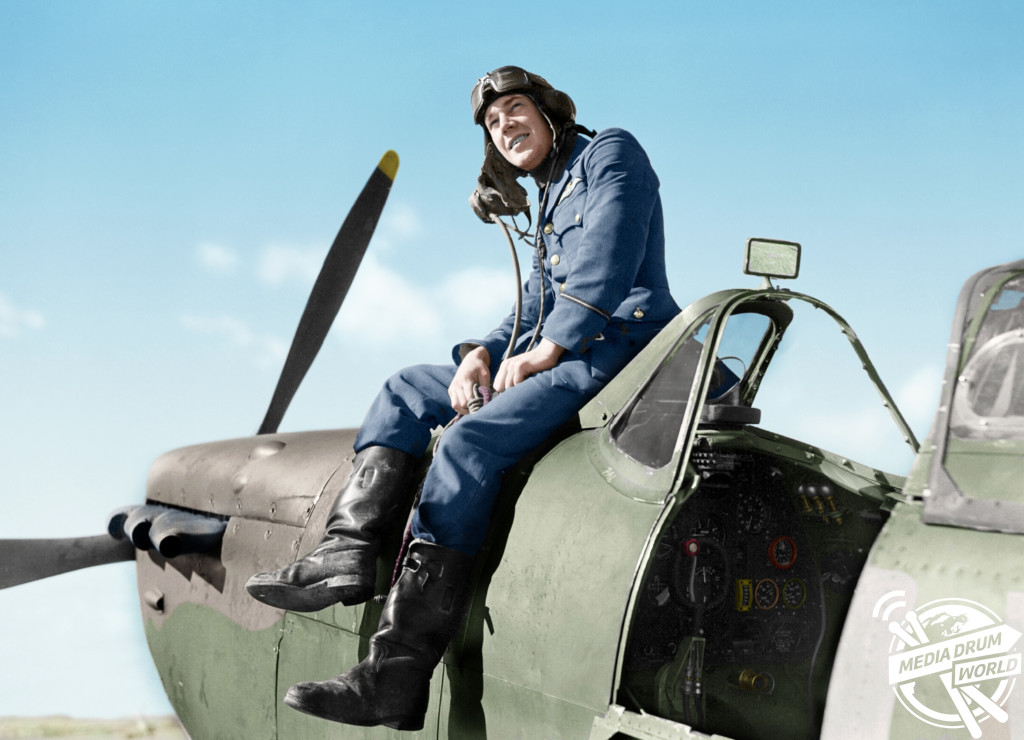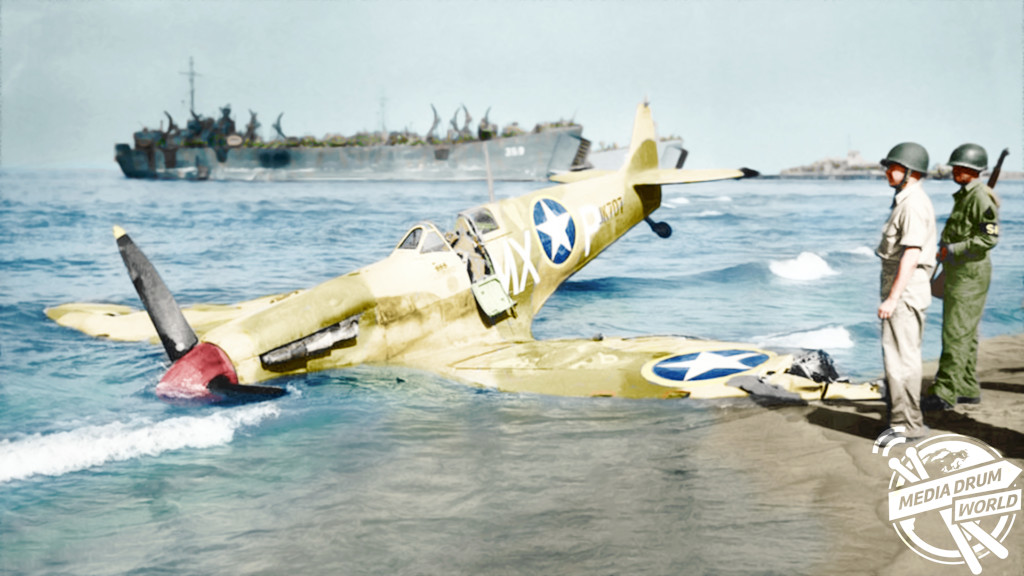
By Mark McConville
STRIKING images of the Supermarine Spitfires that helped Britain win World War Two have been brought into the twenty-first century after being expertly colourised.
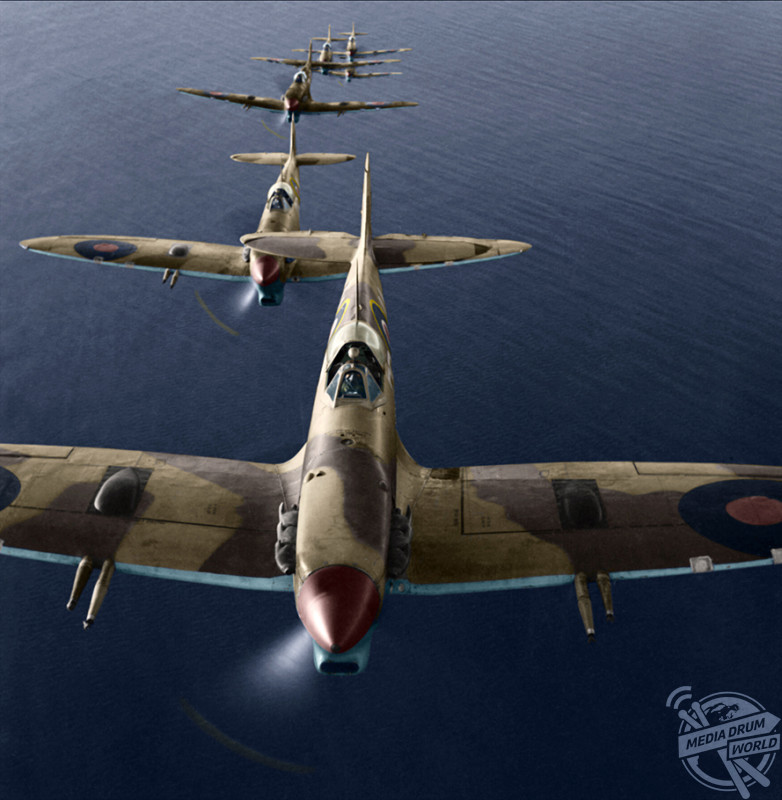
The stunning shots show a Merlin engine being fitted into a Spitfire at CBAF Castle Bromwich Aircraft Factory, Spitfires taking off from an air field and Spitfires in flight formation while on a bombing mission.
Other incredible pictures show a downed US Spitfire that had crash landed, German soldiers sitting on a downed plane on Calais beach and pilots admiring the nose art on one of the fighter jets.
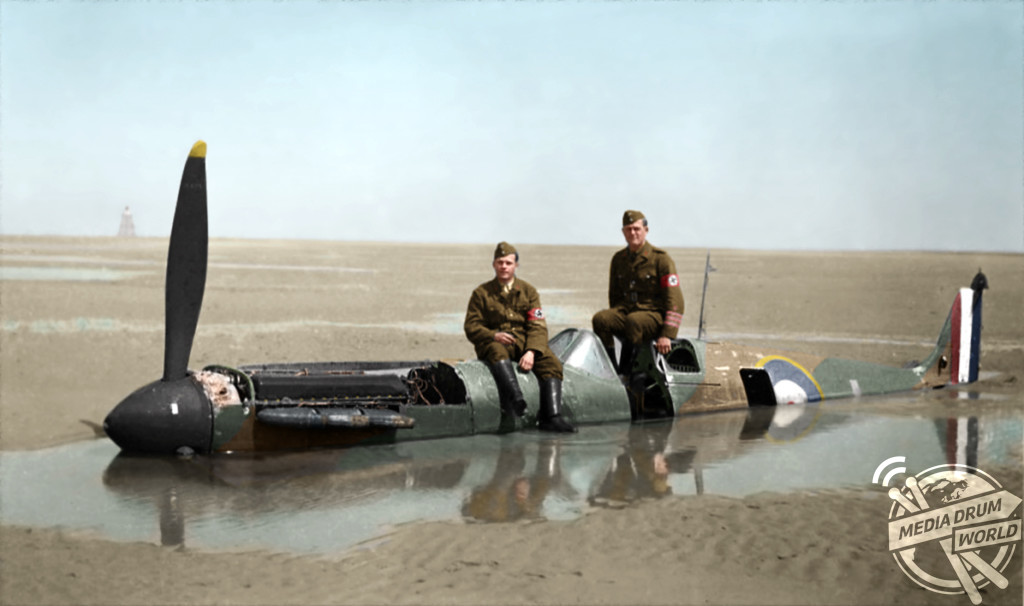
The vivid photographs were painstakingly colourised by design engineers Paul Reynolds (48) from Birmingham, UK.
“Having grown up a couple of miles from CBAF I’ve always had an affinity for the Spitfire also the aircraft is a legend which respected throughout the world,” he said.
“I chose this set of photos because it shows Spitfires from various air forces (RAF, USAF, SAAF), showing what a multinational fighter it was.
“I hope my set represents the life of the Spitfire from being built, into flight to being shot down.”
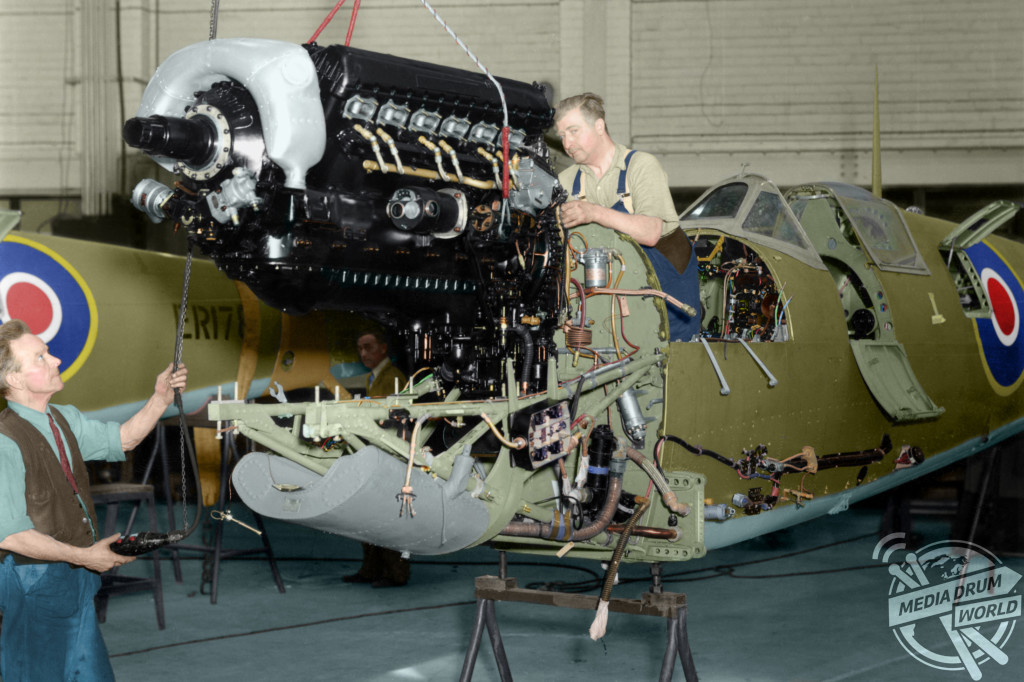
The Supermarine Spitfire is a British single-seat fighter aircraft that was used by the Royal Air Force and many other Allied countries before, during and after World War II.
During the Battle of Britain, from July to October 1940, the Spitfire was perceived by the public to be the main RAF fighter, though the more numerous Hawker Hurricane shouldered a greater proportion of the burden against Nazi Germany’s air force, the Luftwaffe.
Spitfire units, however, had a lower attrition rate and a higher victory-to-loss ratio than those flying Hurricanes because of its higher performance.

After the Battle of Britain, the Spitfire superseded the Hurricane to become the backbone of RAF Fighter Command, and saw action in the European, Mediterranean, Pacific, and South-East Asian theatres.
Much loved by its pilots, the Spitfire served in several roles, including interceptor, photo-reconnaissance, fighter-bomber and trainer, and it continued to serve in these roles until the 1950s.
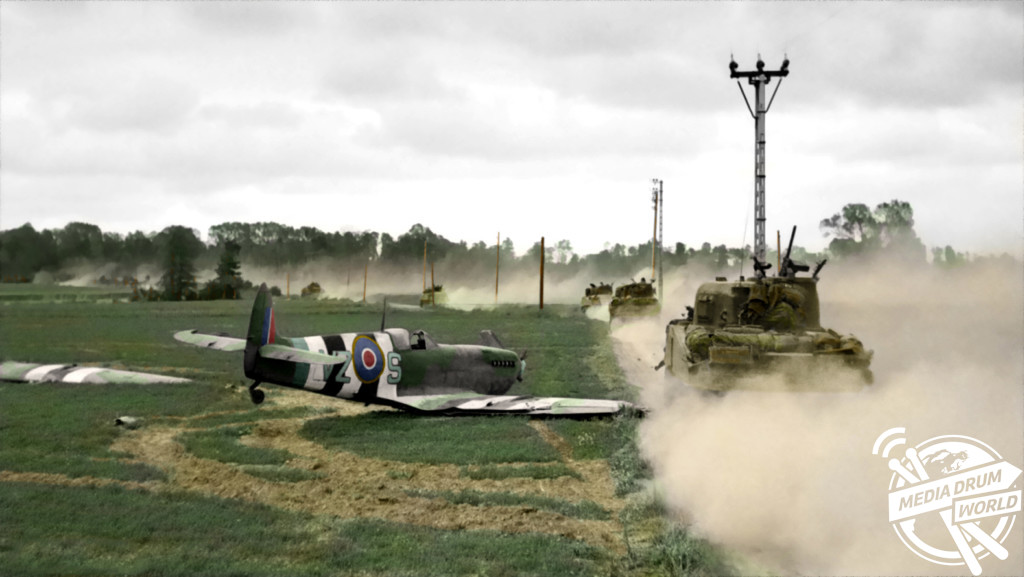
Mr Reynolds hopes his colourised photos can help teach the younger generation about the history of this country.
“I colourise these photos to bring our past to a new generation of people,” he explained.
“Many of my colourisations on my Facebook page get viewed by tens of thousands of people – many from the 16 to 24 age group.”
